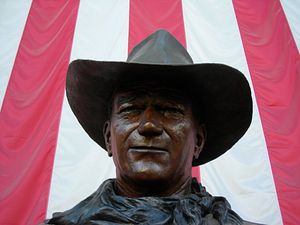In the 18 months of campaigning leading up to the election of President Donald Trump last November, I heard more rhetoric spoken about the Trans-Pacific Partnership than in all of my time spent traveling and living in Asia—by American leaders, policymakers, and the public.
The assertion often made was a simple, and simplistic, if-then statement: If the United States withdraws from the TPP (leaving unchanged Asia-Pacific Economic Cooperation member economy taxes on U.S. imports, and US taxes on APEC imports), then the United States creates a domestic shortage for a broad range of goods that can be met by American production (“bringing jobs back”, as Trump has claimed). This assertion is uninformed, misinformed, and often both. In order for the U.S. economy to thrive, in order to create new jobs, the Trump administration must pursue mutually beneficial trade agreements with the APEC economies—a “TPP 2.0” or some other deal.
First, the U.S. withdrawal from the TPP does not preclude the 11 out of 12 APEC economies that remain a part of the agreement from seeking its ratification. Should this post-US withdrawal scenario proceed, the TPP would represent 17.2 percent instead of 40 percent of the world’s economic input ($11.8 trillion instead of $27.5 trillion in GDP). This bloc of 11 economies could leave unchanged taxes on U.S. imports, or perhaps impose new tariffs in response to Trump administration policies, disincentivizing the purchase of U.S. goods abroad. Further, it is possible that an APEC economy previously unaffiliated with the deal may seek to fill the void left by the United States, taking up a prime spot in the international trading order. Australia is currently leading efforts to reclaim the TPP and is considering a partnership with Indonesia or China in order to meet provisions requiring a minimum number of signatories and percentage in combined GDP.
Next, should a reshaped TPP fail to take form, the U.S. withdrawal from the agreement coupled with the Trump administration’s lack of an alternative trade deal greatly strengthens the appeal of China’s proposed Regional Comprehensive Economic Partnership (RCEP), a 16-country bloc that would include its originator and India, and would represent as much as 30 percent of the world’s economic input. Although much was said about the TPP in the year and a half preceding the U.S. presidential election, the RCEP was oddly absent from any campaign speech or debate. The omission of this alternative arrangement from the public discourse skewed the American citizenry’s understanding of what withdrawal from the TPP might mean. While the TPP and RCEP are not necessarily mutually exclusive agreements, the derivation of any trade benefit assumes U.S. participation in an agreement, which, by executive order, the country ceased doing the Monday before last. The Trump administration has unknowingly gifted China with an exceptional opportunity to position itself as the global leader of trade liberalization for years, if not decades, to come. It has done so to the exclusion of American production.
Last, a John Wayne-style approach to international trade is a poor one likely to produce a literal poor outcome for Americans. Should one consider the possible U.S.-APEC trade scenarios using programmatic logic, it becomes clear that the strongman’s brawn offers nothing, save good physical health, to the strategic brain and diplomatic skill required to craft and negotiate trade deals:
- If the United States pursues free trade, then the APEC economies will pursue free trade.
- If the United States levies tariffs, then the APEC economies will levy same tariffs.
- If the United States halts trade, then the APEC economies will necessarily halt trade.
- If the United States takes no action, then the APEC economies will set the direction and terms of trade.
The Trump administration’s withdrawal from the TPP was the taking of no action and, as such, the APEC economies will set the direction and terms of trade in the Asia Pacific and, to a lesser but critical extent, in North America. The irony of President Trump’s effective inaction is that it was antithesis to the ethos of any fictional “tough guy” character played onscreen by John Wayne; Trump turned away from adversaries, rivals, and friends alike. Both Canada and Mexico are APEC economies that remain a part of the TPP and they are the first and third largest trading partners of the United States, respectively. The Trump administration’s withdrawal from the TPP, and the administration’s planned withdrawal from NAFTA, give these two countries an incentive to meet any shortage by purchasing goods from each other and fellow APEC economies, and not the United States.
No matter who is in the White House, economic globalization has come to pass and the international movement of goods shows no signs of ceasing. It is not enough for the Trump administration to incentivize domestic production in isolation. The administration must pursue mutually beneficial trade agreements that incentivize the purchase of American goods in the APEC economies and elsewhere. Otherwise, any U.S. gains will be short lived as the APEC economies, enabled by tariff-free trade, increasingly turn to each other for supply. In short: If nobody’s buying American, it won’t be worth making American, and the well-paying, stable jobs promised to the electorate won’t be delivered.
Gregory Daniels is an American-Canadian information and communication strategist. Gregory holds an M.S. in international affairs from the S. Rajaratnam School of International Studies, Nanyang Technological.

































